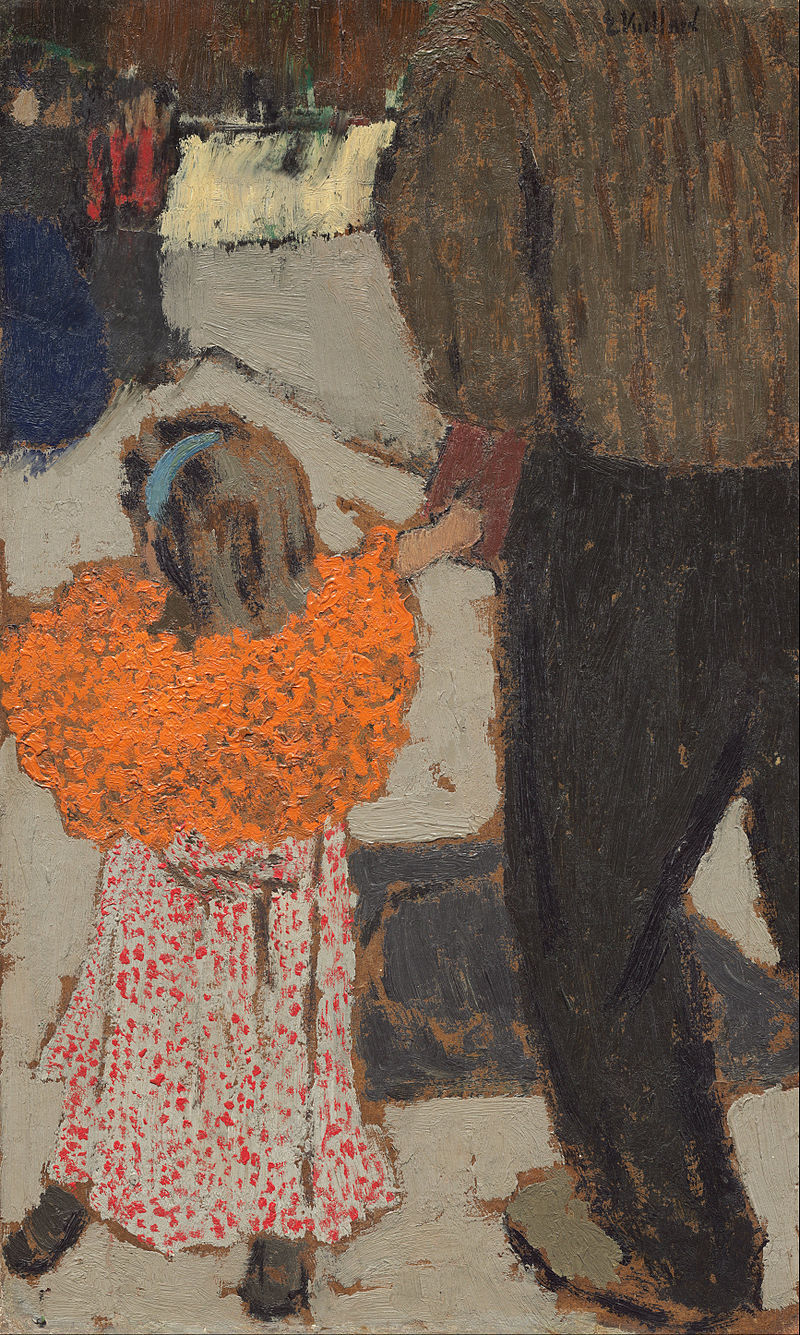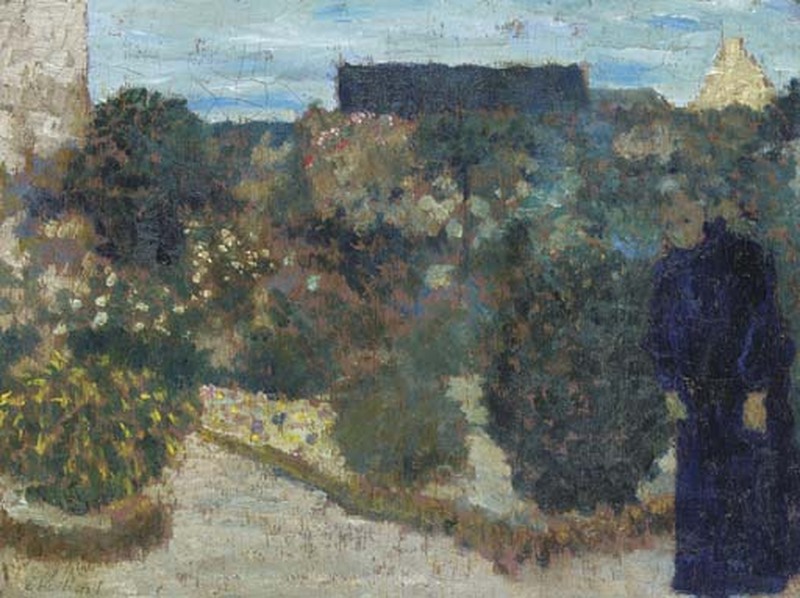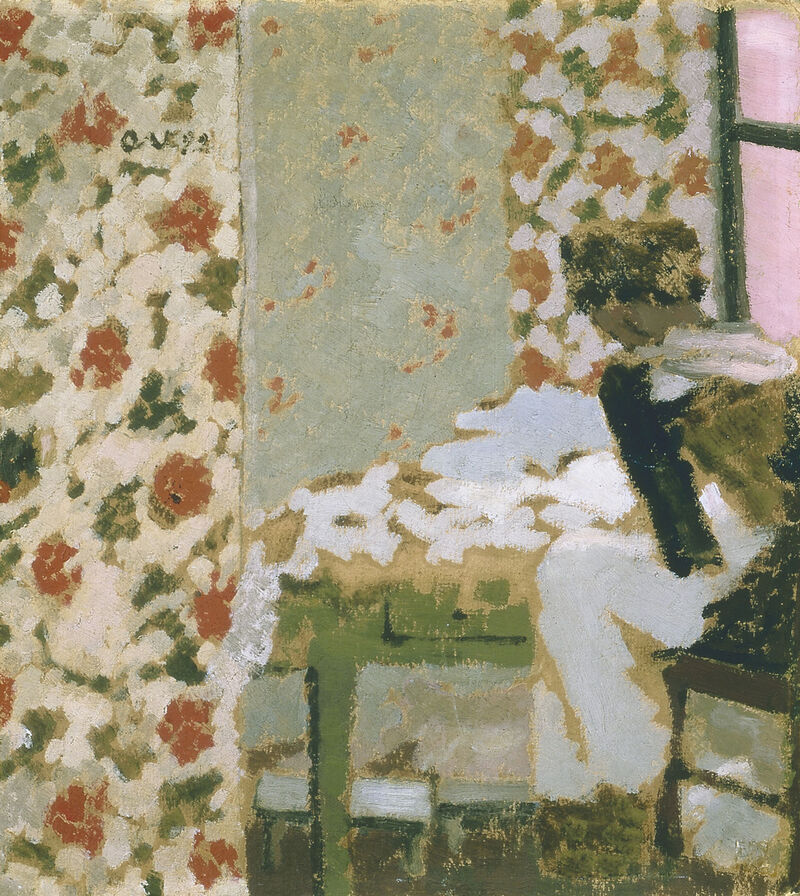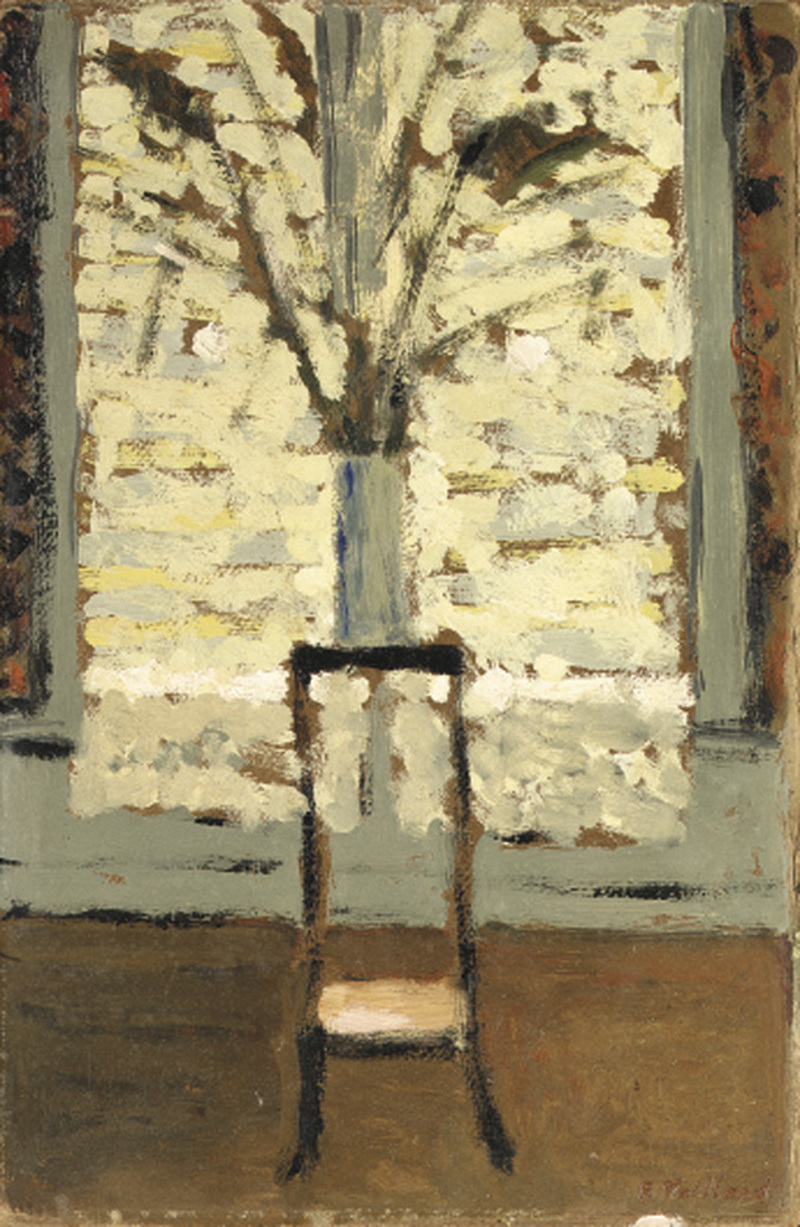Vuillard
I've owned exactly one book on Vuillard. Twice. I've bought it, lost it, bought it again, and lost it again. I hope it turns up. (edit: just found it)
The facts I've retained are fragmentary and mostly beside the point: trained in the academy, his mother was a seamstress, was part of Les Nabis. These details don't amount to understanding.
Truthfully, I don't know very much about any painter. Not in the way we usually mean. Biographies, timelines, movements, and theories of influence - none of this information stays with me for very long. I wish it did. Maybe it's from adhd, or drugs, or the internet. But perhaps those frames of reference are too linear for the kind of looking that painting demands.
I do know Vuillard's paintings. I've been looking at them for as long as I've been painting. When I see dappled light breaking through trees, or the hush of a private room my day-to-day, these things appear to me as Vuillard might have painted them.
Color against color. Pattern over pattern. Not harmony, but vibration. Satisfaction and cohesion without clarity, albeit with an underlying tension, just shy of coherence. The figure sinks into the armchair, which dissolves into the curtain, which drifts into the wall. Subject and background soften into each other, collapse gently, then reconstitute themselves as sticky, crusty, amorphous forms.
These paintings resist analytical looking, but offer another way of seeing. A kind of leisurely drifting through the painting. There's formal rigor beneath the surface, but it doesn't announce itself. The pleasure is too immediate, too rich, and with it comes unease. Anything this gratifying must be suspect.
Something starts to happen if you sit with a subject long enough and paint it with real attention. Not revelation, exactly. Not the 'a-ha' of academic problem-solving, but something slower. Like watching fog lift from a mirror. The image doesn't emerge all at once; it accumulates. The paint thickens. The surface records not what you saw, but how long you looked. Like the grooves on a record, the marks and the spaces between them hold finely tuned pockets of time.



